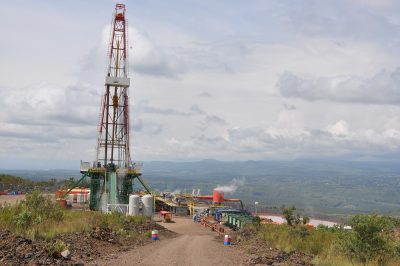National Geothermal Data System for the U.S. to be lead by Boise State University
The U.S. Department of Energy has allocated US$ 4.9 million towards a National Geothermal Data System, an effort which will be lead by Boise State University in Idaho.
Introduced in Reno last week and posted locally in Idaho, “new efforts to compile information on nationwide geothermal resources will be led by Boise State University, school officials reported on Oct. 5. The lead designation comes with a U.S. Department of Energy grant of $4.9 million to be used over the next five years to establish the National Geothermal Data System – a Web-based network to support the discovery, development and sustainability of geothermal hot spots.
Others taking part in the project include the University of Utah; University of Nevada, Reno; Oregon Institute of Technology; Stanford University; and the Geoscience Information Network, a partnership between the Association of American State Geologists, the U.S. Geological Survey data system and Arizona Geological Survey.
Proposed in response to the American Recovery and Reinvestment Act passed by Congress early this year, the NGDS supports a call by President Barack Obama to diversify the country’s energy portfolio.
According to analysis by the International Energy Agency, less than 1 percent of the world’s energy comes from geothermal power. The NGDS is meant to improve that percentage by giving energy developers a clearer picture of geothermal locations and abundance.
“The interest in geothermal is just ratcheting up, and Boise State is a national leader.” stated Walter Snyder, NGDS director and professor of geosciences at Boise State.
Idaho has long been known for its geothermal resources, most notably in Boise where much of the downtown core – including the capitol mall – is heated geothermally. But Idaho only has one active geothermal power plant, the Raft River project south of Malta. U.S. Geothermal, the project’s Boise-based developer, is participating in a separate study with the University of Utah to increase productivity at the plant.
If resources were properly mapped and the most promising sites developed, estimates from the Bureau of Land Management and the U.S. Forest Service suggest the Gem State could be generating as much as 855 megawatts from geothermal sources by 2015 – enough to power more than 575,000 homes.
“Boise State continues to play a leadership role nationally in geothermal energy development research,” Boise State Vice President for Research Mark Rudin stated. “This award further demonstrates our commitment to tapping into one of our region’s most valuable and promising energy sources.”
The following is a description given on the project: “The “National Geothermal Data System” (NGDS) is being created by a consortium of federal, state, and academic institutions under the auspices of the Department of Energy to foster the growth of geothermal in the nation’s energy portfolio. The “NGDS Network” is comprised of the NGDS-core at Boise State Univ., Energy Geosciences Institute (Univ. Utah), Great Basin Center for Geothermal Energy (Univ. Nevada, Reno), GeoHeat Center (Oregon Institute of Technology), Stanford Geothermal Program (Stanford Univ.), and the Geoscience Information Network (GIN, Arizona Geological Survey), USGS, BLM, Idaho Department of Water Resources, CoreWall (Univ. Minnesota), Geoinformatics for Geochemistry (GfG, LDEO, Columbia Univ.) and other partner, participating and affiliated databases. The NGDS is designed as a system for data acquisition, management and maintenance and for data access by a wide variety of users, including federal and state agencies, other databases, researchers, decision makers, the public, educational institutions, and the geothermal industry and financial institutions. It is a “federated network, that is comprised of several member networks and individual databases that share some level of trust, but member networks and databases retain their own administrative control. The Network will be linked by a set of standards, protocols and procedures and web services.” (source:GSA conference)
Source: Idaho Business Review











